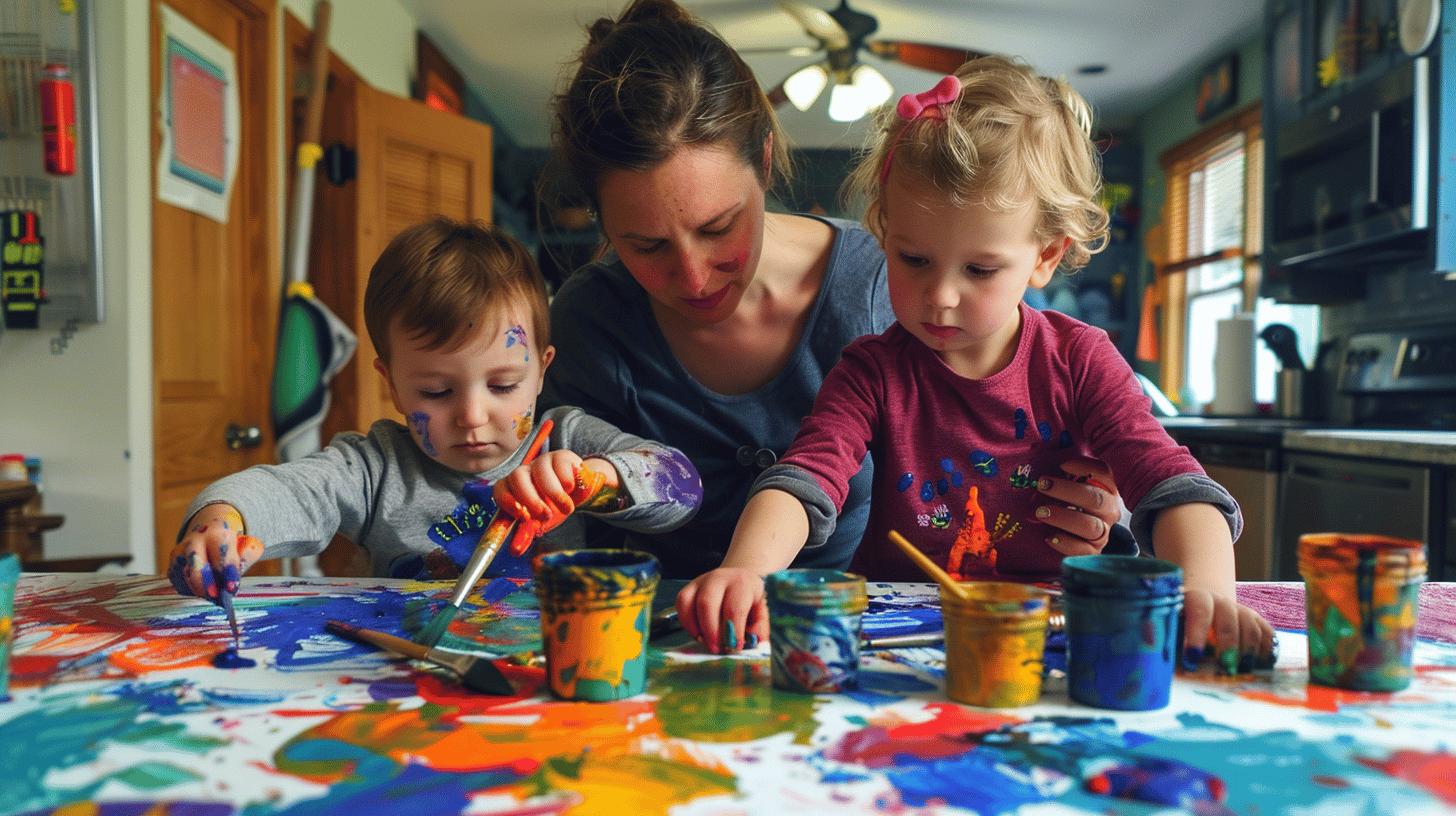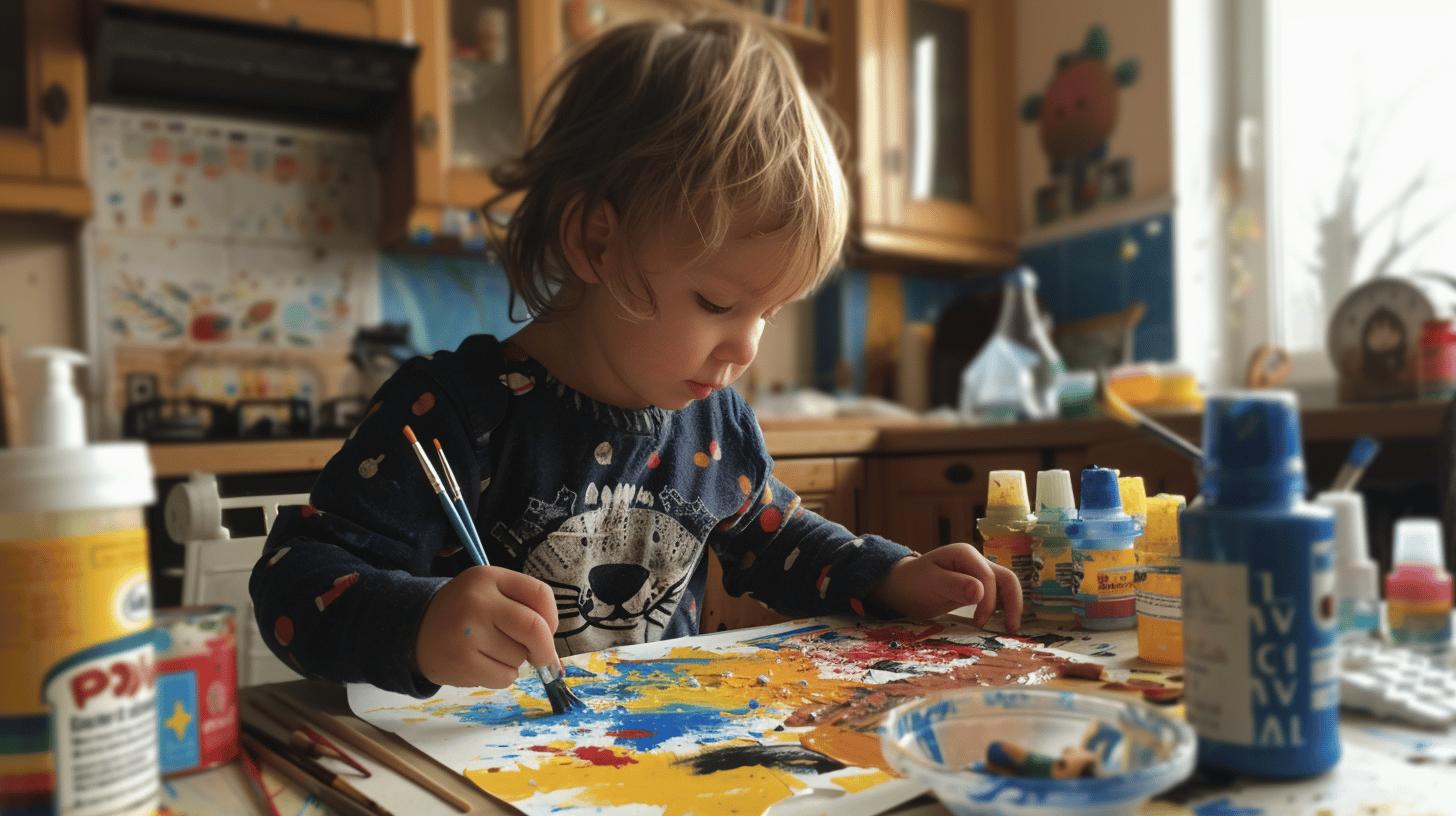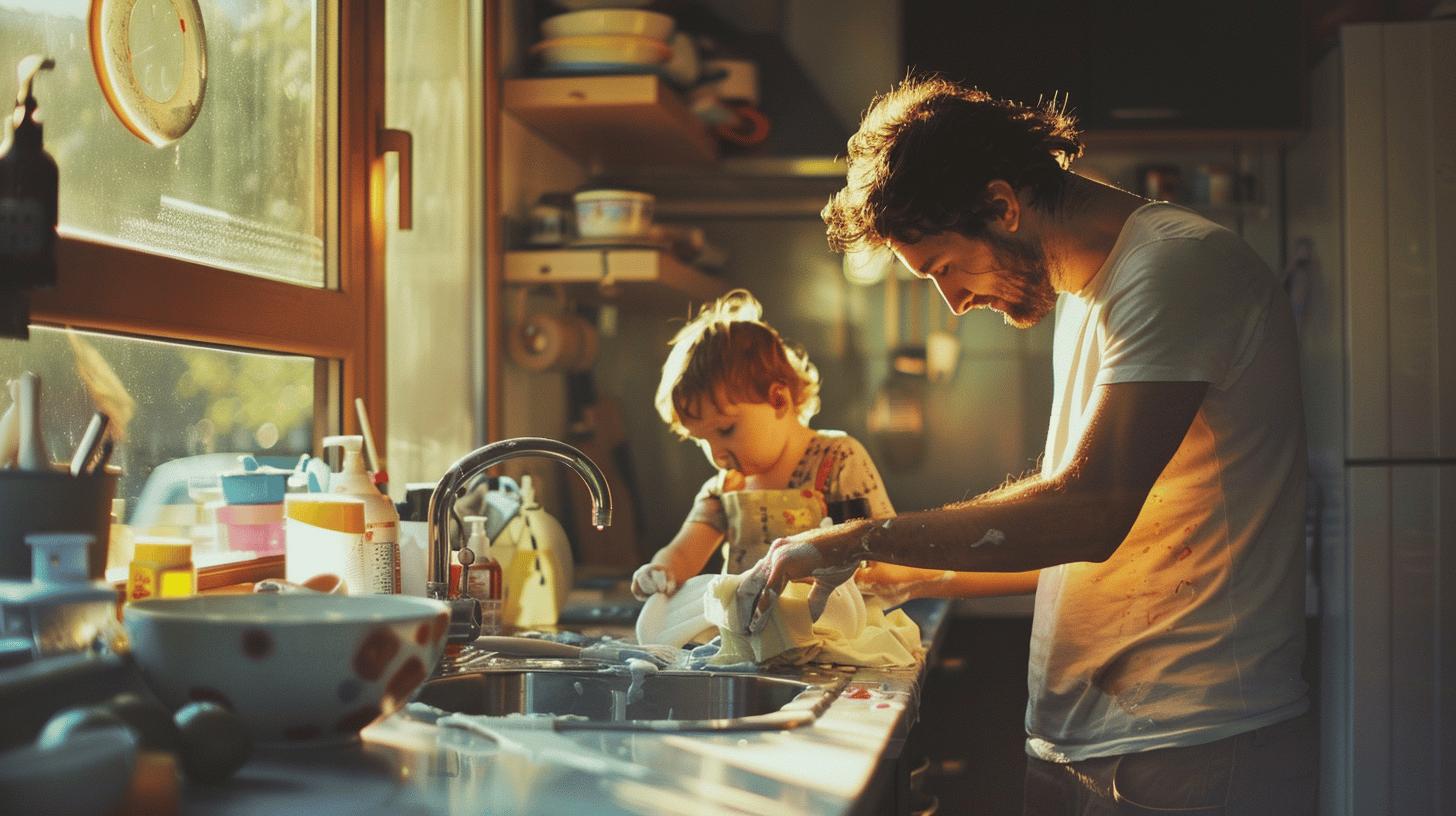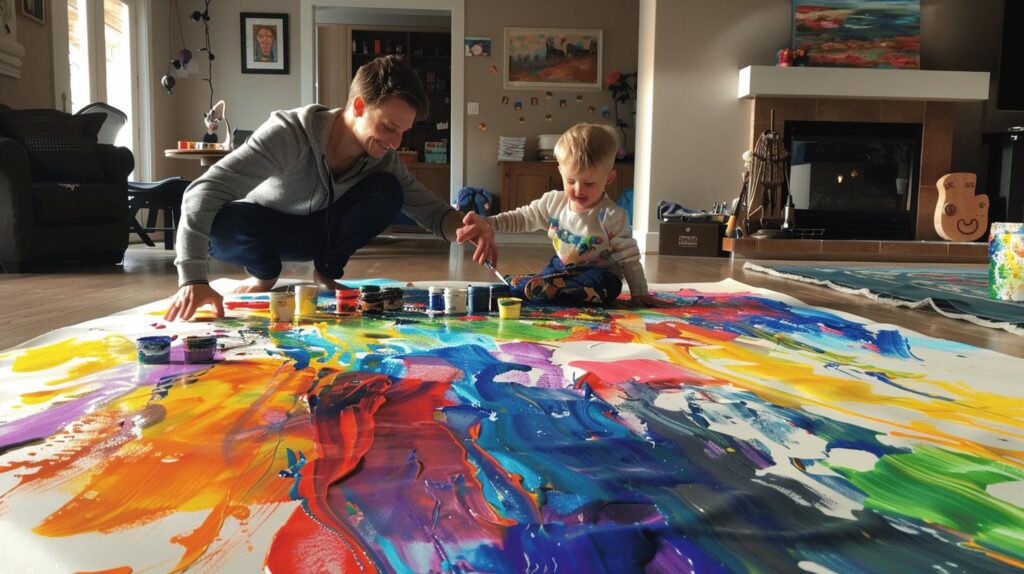Are you tired of the same old parenting routines? Why not transform your family time into an artistic adventure with fun and creative parenting painting ideas? Not only do these activities spark creativity, but they also offer countless opportunities for parent-child bonding. From messy abstract art to themed masterpieces, painting with your kids can become a new favorite. Dive into our guide for step-by-step projects, essential materials, and safety tips. Ready to paint some memories? Let’s get those brushes moving!
Fun and Easy Parenting Painting Ideas
Painting with children can be a delightful way to bond and spark creativity. Fun and easy painting projects allow parents to engage their children in productive activities that stimulate artistic expression. A variety of painting ideas are suitable for different age groups, ensuring that every family member can participate. These projects often require simple materials, making them accessible and enjoyable for everyone involved.
Engaging in painting activities offers numerous benefits. It enhances cognitive development, improves fine motor skills, and provides a platform for emotional expression. Additionally, painting together fosters communication and teamwork, helping children feel more connected to their parents. These shared experiences are not only educational but also create lasting memories.
- Handprint Art: Create a masterpiece by dipping your child's hand in paint and pressing it onto a canvas. Add details to transform the handprints into animals, flowers, or other fun shapes.
- Nature Stamping: Collect leaves, flowers, and other natural items. Dip them in paint and stamp them onto paper to create beautiful nature-inspired art.
- Bubble Wrap Prints: Wrap a piece of bubble wrap around a rolling pin, dip it in paint, and roll it across paper to create textured prints.
- Salt Painting: Draw a design with glue on heavy paper, sprinkle salt over the glue, and then paint the salt with watercolor for a vibrant, textured effect.
- Tape Resist Art: Place tape on a canvas or paper to create patterns, paint over the entire surface, and then remove the tape to reveal striking designs.
These painting activities can significantly enhance parent-child bonding. By working together on creative projects, parents and children develop a sense of teamwork and mutual respect. The process of creating art together provides opportunities for communication and collaboration, strengthening their relationship in a fun and engaging way.
Step-by-Step Guides for Parenting Painting Projects

Step-by-step guides are essential for making painting projects accessible and enjoyable for both parents and children. They offer clear directions, ensuring that everyone can follow along and create beautiful art together. These guides are particularly beneficial for beginners, providing structure and confidence as they explore their creative abilities.
Handprint Animals
Transform your child's handprints into charming animal characters with this simple project.
- Gather materials: paint, paper, brushes, markers.
- Dip your child's hand in paint and press it onto the paper.
- Let the handprint dry.
- Use markers to add details like eyes, ears, and tails to create animals.
- Display the finished art proudly.
Nature Collage Painting
Incorporate elements from nature into your child's artwork with this engaging activity.
- Collect leaves, flowers, and small twigs from outside.
- Arrange the natural items on a canvas or thick paper.
- Secure them using a small amount of glue.
- Paint around and over the items with watercolors or acrylics.
- Remove the items once the paint is dry to reveal beautiful silhouettes.
Bubble Wrap Prints
Create textured and colorful prints using bubble wrap and paint.
- Cut a piece of bubble wrap to fit your paper.
- Apply paint to the bubble wrap using a brush or roller.
- Press the painted bubble wrap onto the paper.
- Lift the bubble wrap to reveal the print.
- Repeat with different colors for a layered effect.
Following these step-by-step guides provides several benefits. They make the painting process smooth and enjoyable, reducing frustration and enhancing creativity. Parents and children can bond over shared accomplishments, creating not just art but also cherished memories.
Essential Materials for Parenting Painting Activities
Having the right materials for parenting painting activities is crucial. The appropriate supplies not only make the creative process more enjoyable but also ensure safety and longevity of the artworks. Choosing high-quality materials can prevent frustration and allow children to fully express their artistic abilities. From brushes to canvases, each item plays a significant role in the painting experience.
Selecting age-appropriate supplies is essential to cater to different developmental stages. Younger children may need larger, easy-to-hold brushes and washable paints, while older kids can experiment with more complex mediums like acrylics or watercolors. Age-appropriate materials ensure that children can handle the tools comfortably and safely, enhancing their overall painting experience.
|Material |Age Group |Recommendations |
|—————-|————-|—————————————————–|
|Washable Paints |2-5 years |Non-toxic, easy to clean, bright colors |
|Acrylic Paints |6+ years |Versatile, quick-drying, suitable for various surfaces|
|Brushes |All ages |Variety of sizes, soft bristles for younger children |
|Canvas Panels |6+ years |Sturdy, pre-primed, suitable for acrylic and oil paints|
|Watercolor Paper|3+ years |Thick, textured, absorbs water without warping |
|Palettes |All ages |Easy to clean, lightweight, multiple wells |
Using safe and non-toxic materials is paramount when painting with children. Always check labels to ensure products are free from harmful chemicals. Opt for brands that specifically state they are child-friendly. This not only protects your child’s health but also allows for a worry-free creative environment.
Safety Tips for Parenting Painting Projects

Ensuring safety during painting activities is essential when working with children. Accidents can happen quickly, so it’s important to create a safe and organized environment. Set up a designated painting area with easy-to-clean surfaces and keep hazardous materials out of reach. Supervision is crucial to prevent spills, ingestion of paint, or other mishaps. By prioritizing safety, you can make the painting experience enjoyable and worry-free for both you and your child.
Using non-toxic and child-friendly materials is a must. Always check the labels of paints and supplies to ensure they are free from harmful chemicals. Choose water-based paints, which are easier to clean and safer for young children. Brands that specifically state they are child-friendly provide an added layer of assurance. This precaution not only protects your child's health but also makes cleaning up much simpler.
- Always supervise children to avoid accidents.
- Use non-toxic, water-based paints.
- Cover surfaces with newspaper or plastic sheets.
- Provide age-appropriate tools like large brushes for small hands.
- Keep a first aid kit nearby for minor injuries.
After the painting fun is over, cleaning up efficiently helps avoid mess. Use child-friendly cleaning products to wipe down surfaces and wash brushes. Encourage children to participate in the cleanup process, teaching them responsibility. Store all materials in a safe place to prevent unsupervised access. By keeping the painting area clean and organized, future projects will start smoothly and safely.
Inspirational Parenting Painting Ideas to Try
Exploring creative painting projects with your children can be a wonderful way to bond and stimulate their imagination. Inspirational painting ideas provide a foundation for children to express their thoughts and feelings through art. By introducing them to different painting styles and themes, you can help them develop their artistic skills and boost their confidence. These projects can be tailored to suit various age groups and artistic abilities, making it easy for the entire family to get involved.
Abstract and thematic painting ideas are perfect for encouraging creativity. Abstract art allows children to explore colors, shapes, and textures without the pressure of creating something specific. This freedom can lead to unique and beautiful creations that reflect their individuality. Thematic painting, on the other hand, gives children a focus, like seasons, animals, or favorite stories, making it easier for them to channel their creativity into a cohesive artwork.
- Rainbow Drip Painting: Let children pour different colors of paint at the top of a canvas and watch as it drips down, creating a vibrant rainbow effect.
- Underwater Scene: Use blue paint for the background and let kids add sea creatures, plants, and bubbles with brushes and sponges.
- Galaxy Art: Create a stunning galaxy by blending dark colors and adding splatters of white paint to represent stars.
- Emotion Faces: Have children paint different faces showing various emotions, helping them learn to express their feelings.
- Seasonal Trees: Paint a tree trunk and branches, then use fingerprints to add leaves in colors representing different seasons—green for spring, red for autumn, etc.
Involving children in the creative process is key to making these activities enjoyable and educational. Allow them to choose their own colors and tools, and encourage them to come up with their own ideas for the paintings. Provide guidance and support, but let them take the lead. This autonomy helps build their confidence and fosters a deeper connection to the artwork they create. By working together, parents and children can enjoy a shared sense of accomplishment and create lasting memories.
Cleaning Up After Painting with Kids

Cleaning up after painting with kids is crucial to maintain a tidy and stress-free environment. Effective cleanup prevents paint from staining surfaces and keeps materials organized for future use. Teach children the importance of cleaning up as part of the activity, making it a fun and educational experience. This not only helps in maintaining order but also instills a sense of responsibility in children.
Using child-friendly cleaning products is essential to ensure safety. Opt for non-toxic, gentle cleaners that are effective but safe for little hands. These products can clean paint off surfaces without causing harm to children or furniture. Having the right supplies on hand makes the cleanup process quick and easy.
- Cover the workspace with newspaper or a plastic tablecloth before starting.
- Keep wet wipes handy to clean spills immediately.
- Use a mild, non-toxic cleaner to wipe down surfaces.
- Rinse brushes and palettes promptly to prevent paint from drying on them.
- Store all painting materials in a designated bin or container.
Final Words
Discovering new and exciting parenting painting ideas can enhance the bond between parents and children. The article shared simple, step-by-step painting projects, essential materials required, and safety tips for a fun and secure experience.
Adding inspiration, such as abstract and thematic painting ideas, encourages creativity. Ensuring proper cleanup practices concludes the activity on a positive note.
Engaging in these projects fosters a creative, nurturing environment, making parenting painting an enriching experience for the entire family. Embrace the joy, and watch the creativity flow!
FAQ
What is the art of positive parenting?
Positive parenting includes demonstrating love, setting clear boundaries, and fostering independence in children. The goal is to guide children towards positive behaviors through encouragement and constructive feedback rather than punishment.
Is it normal to not enjoy parenting?
It is normal to sometimes feel overwhelmed or not enjoy parenting. Many parents experience moments of stress and fatigue. Seeking support from family or parenting groups can provide relief and encouragement.
What is the purpose of a parenting group?
The purpose of a parenting group is to provide parents with a support network. These groups offer advice, share experiences, and provide emotional support, which can help parents manage the challenges of parenting.
What is sharing parenting duties equally?
Sharing parenting duties equally involves both parents participating in tasks such as childcare, household chores, and decision-making. This balanced approach ensures that neither parent feels overwhelmed and promotes a more cohesive family dynamic.


